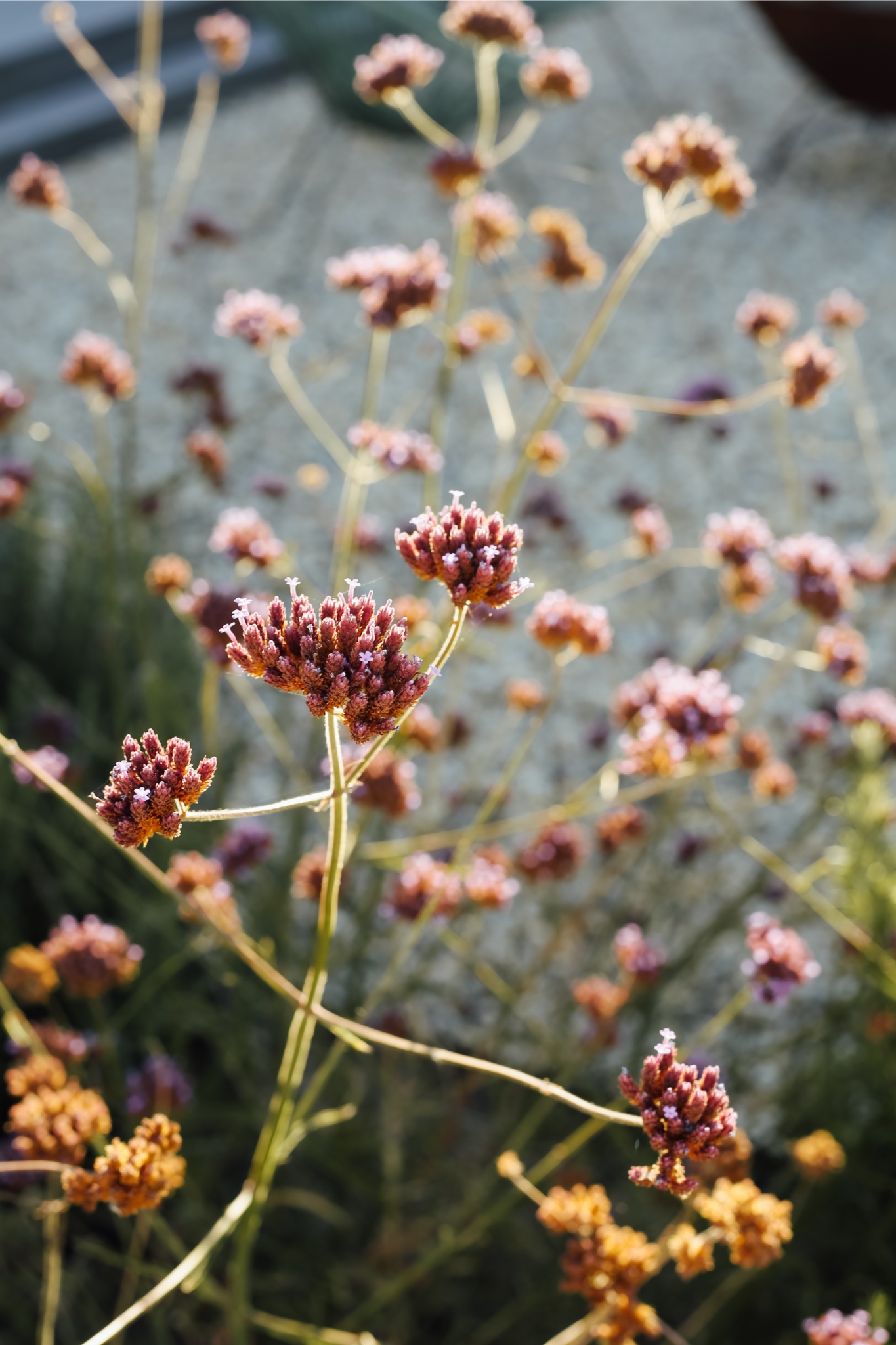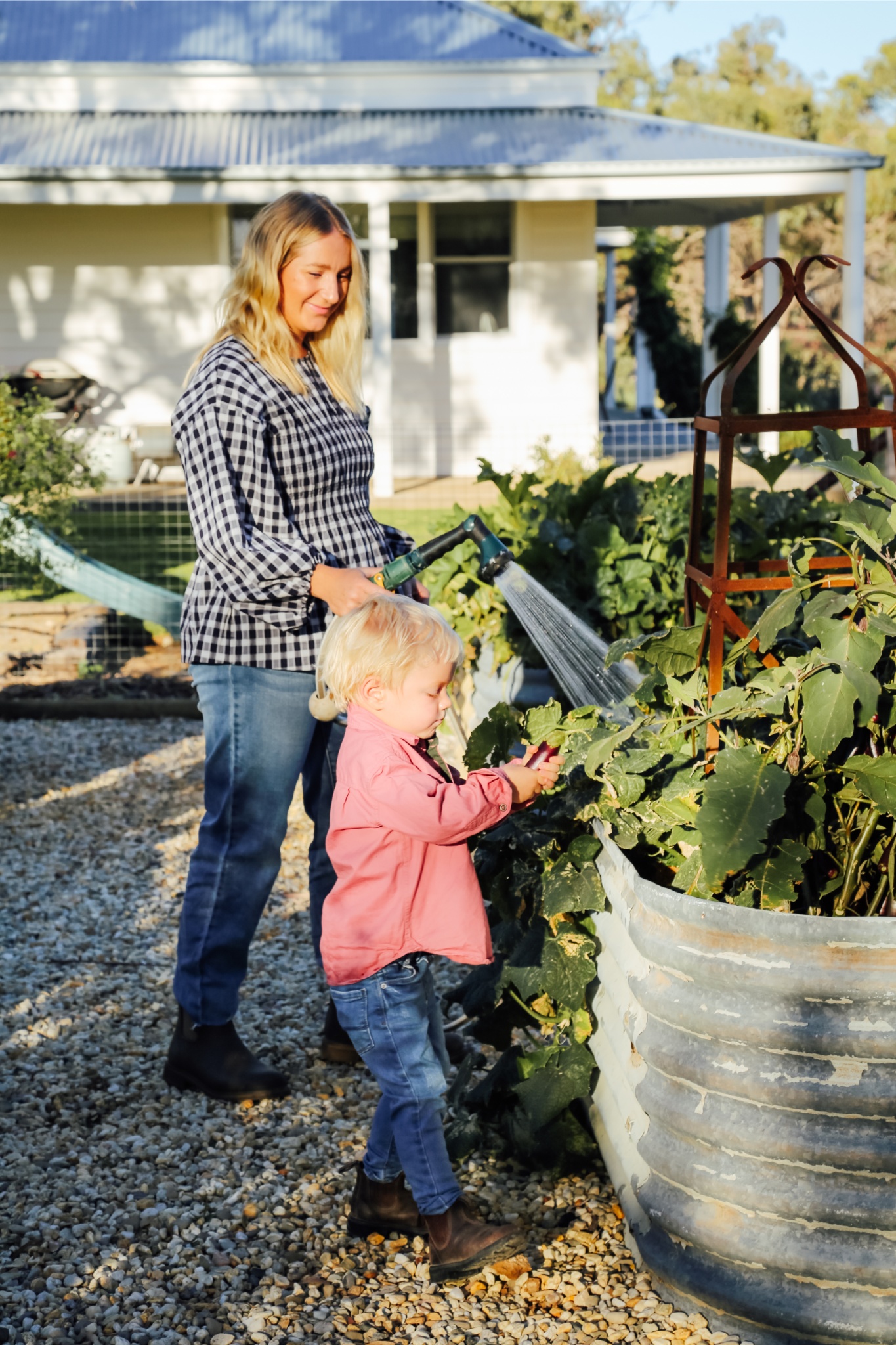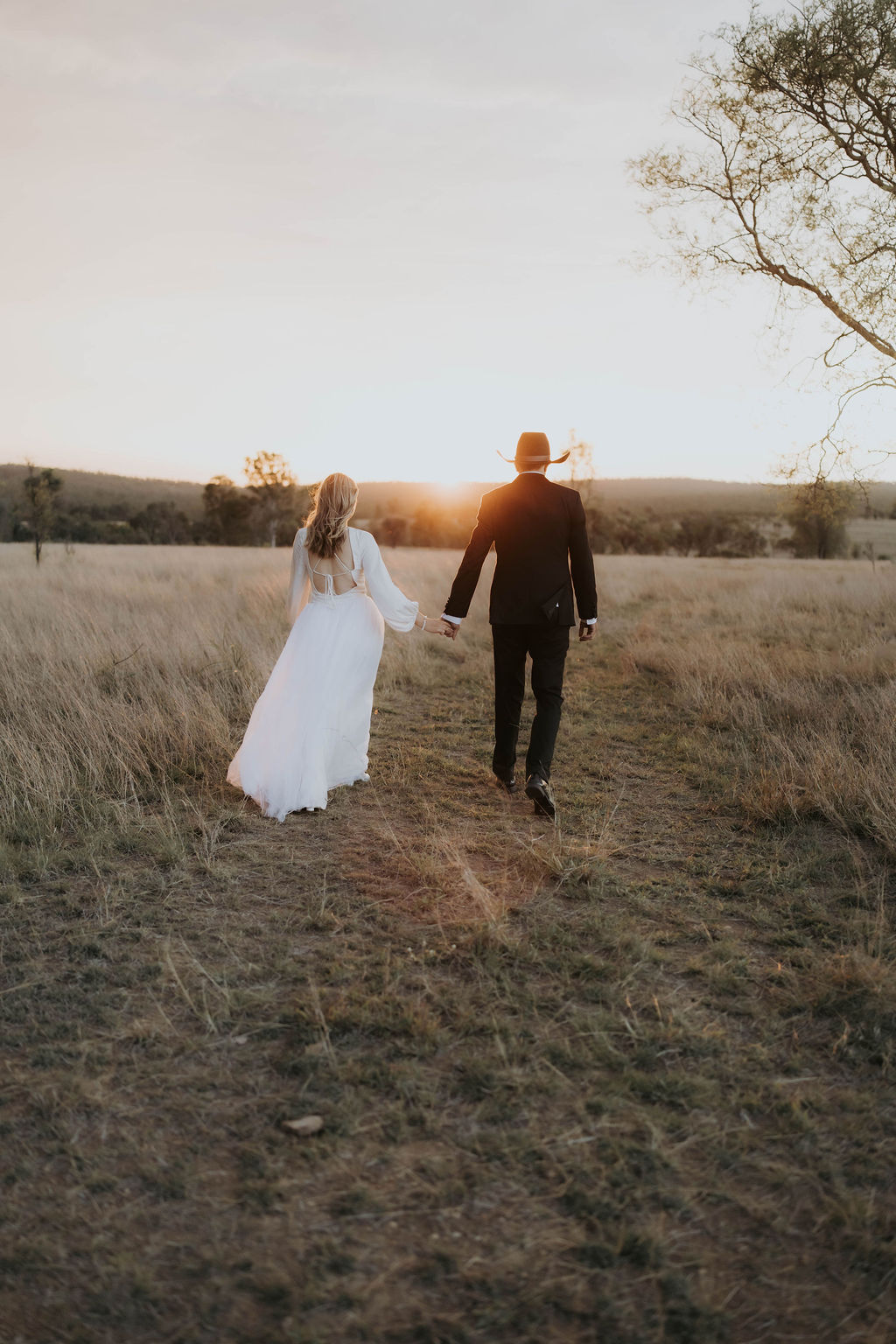Sign up to our mailing list for the best stories delivered to your inbox.
Cassandra Hooke, the Outback Gardener, answers a reader's question about frost-hardy plants.
WORDS CASSANDRA HOOKE PHOTOGRAPHY EMMA CROSS


We’ve nearly completed our latest (and biggest to date) project in our garden: the swimming pool and surrounds. My husband and I decided to do the fencing and landscaping ourselves after having the pool installed by a specialist company. This was no small feat, and I’m so happy with the result: it will make using this area with our family all the more enjoyable, washing away the sweat, blood and tears of this project.
There really weren’t any tears, just a little bit of stress and overthinking. I added a few extra hurdles, such as planting a mature olive tree in a secondhand 1.8 metre concrete trough. We wanted a pool area that was cohesive with the rest of the garden and surroundings, so we opted for a timber and copper pipe fence that will grey and develop patina with age. This will seamlessly transition into the natural surroundings of black box (Eucalyptus largiflorens), saltbush and grassland. I’m all for having a lush green oasis on a farm, but I do prefer to have a soft transition into the surrounding landscape if possible. (This may be easier to do here on pastoral farmland, than on cropping or dairy country.) I’m extending this soft transition to the boundary of our garden by using locally growing saltbush in two different heights to create an informal hedge along the driveway, and have already planted native westringia as a hedge to the north to provide a subtle contrast to the surrounding landscape. I’ll be planting the saltbush as tubestock in autumn.
With the completion of one project, another commences; the next step is reinstalling our boundary fencing and reinforcing existing sections with chicken wire to deter livestock, rabbits, kangaroos and hares from coming into the garden. As part of this we are also updating the entry to our home with a new grid and fence line to allow for a division between farm and home.
I’m quite intent on creating a pleasant, welcoming home and this will enhance ours. It’s probably way too soon to say this will be our last major project for the garden (I can feel my nose growing as I write), but I’m glad to tick it off our list.
Cassandra talks to Graziher’s Life on the Land about her love of gardening. Article continues below.
We have a large lawn area surrounding our home on the farm. To break up the space, about three years ago my mother-in-law had planted a row of ‘Teddy Bear’ magnolias [Magnolia grandiflora ‘Teddy Bear’]. There are a dozen of these trees, planted in a straight row with a small break of lawn to access between them. They are doing well, but we want to incorporate them into the garden by underplanting them with something to make it look more appealing. They’re south facing, get full afternoon sun and a bit of wind. We have black loam type soil. I’m not too keen on anything strappy or snake-harbouring. We are a young farming family so low-maintenance plants would be ideal.
Bel Slattery, Hamilton, Victoria
You have a couple of options here: you could either continue with the existing pared-back formal style and create long rectangular gardens beds beneath the trees, or you could soften the appearance of the magnolias by creating a sweeping garden bed that curves outward in the centre or toward the house. For underplanting, Rhaphiolepis indica ‘Snow Maiden’ (Indian hawthorn) is a white-flowering, low-mounded evergreen shrub that requires little maintenance. An ideal substitute for Buxus spp., you get the advantage of small white flowers in summer without the hassle of regular hedge maintenance. It’s frost hardy and tolerant of wind and heat. Rhaphiolepis also have a dark glossy green foliage, which will complement the magnolias. There are a few different varieties to choose from, but ‘Snow Maiden’ would be my selection due to its dense, round growth habit. For a lower-story plant, Brachyscome multifida (cut-leaf daisy) would add some colour and texture. This is a native evergreen plant with small purple daisy-like flowers, and requires no winter or late summer pruning.
If you incorporate a sweeping curve you could place a feature in the middle of the curve to add further interest. A bird bath, a large pot, or a feature plant would be my suggestion.
I need some tips for a frost-hardy garden: plants that won’t just survive, but will thrive. We are located in the Southern Tablelands of New South Wales, so have very cold and long winters. We have frosts between −4° and −7° in cooler months, and it can also be quite windy. We have tried and failed with a lot of plants. Help us find some that will work!
Sophie Hall, Braidwood, New South Wales
Deciduous plants will generally handle colder temperatures over winter better. Large shrubs such as Cornus spp. (dogwood), Betula pendula (silver birch) and Viburnum opulus (snowball bush) are stunning plants for cooler climate gardens.
Apples, cherries and crabapples are also suited to cooler climates. You can also take advantage of your climate and grow different types of berries and nuts. Blueberries are not only a delicious fruit, but also an attractive shrub, as are hazelnuts.
For evergreens, try conifers, which range from low-growing cascading groundcovers to large trees. Most conifers can handle very cold conditions due to the waxy coating on the narrow needles.
Small shrubs that will tolerate frost include azaleas, correas, buddleias and Choisya spp., (Mexican orange blossom) and strappy plants such as Lomandra spp. and dianella.
If you’d like to grow something that isn’t so frost tolerant, I’d suggest planting under the canopy of a large tree or close to the house. This will create a microclimate that will reduce the frost falling on the plant’s foliage.
Specialist nurseries such as Tablelands Nurseries in Cooma, New South Wales, ship to most parts of Australia. They specialise in plants for cooler areas. I’d recommend checking out their website.
We have a relatively new garden in south west Queensland and I am looking for some new varieties of groundcover, especially ones that can handle full sun and bore water and are frost and drought tolerant. My lawn and garden cover an area of 1 hectare, so I have a lot of space and want to use this as an opportunity to grow lots of different things. I’ve tied the garden together with a few key repeated plants and a colour scheme of purple and white with pops of yellow and pink. I found it easy to choose shrubs and feature plants, but so far have only used seaside daisies, lambs’ ears and petunias as groundcovers. Do you have recommendations that are a little less common?
— Georgia Hoolihan, St George, Queensland
I love groundcovers: they add another dimension to your garden and are a great practical addition, as they really do help suppress weeds and limit the amount of mulching required. Groundcovers can also cool the soil and therefore help keep small animals and insects happy during hot and cold periods.
I think all groundcovers are underrated, especially native ones. Australia really has some magnificent plants and I’d prompt you to look at indigenous plants (those that occur naturally in your region), as there may be some that are suitable for your garden. It’s a great way to introduce some local plants into your garden without making a statement or altering the feel too much.
A few that are widespread across the country are Myoporum parvifolium (creeping boobialla), prostrate varieties of Goodenia ovata, Brachyscome spp., Carpobrotus spp. (pigface), Chrysocephalum apiculatum (yellow buttons), Hardenbergia violacea ‘MEEMA’ and Scaevola aemula (fan-flower).
Some exotic plants that I also find will grow well in most areas and are tolerant of a wide variety of conditions include prostrate rosemary, Helichrysum petiolare (licorice plant), Verbena rigida f. lilacina ‘Polaris’, creeping thyme, clumping dwarf agapanthus, Armeria maritima (sea thrift or sea pink) and Convolvulus cneorum (silverbush).
I am working by trial and error in a large pre-existing garden bed on our farm. Due to harsh weather conditions and clay soil, this sometimes means substituting a plant variety that is not thriving, but also moving established plants in order to keep my design and create consistency. I initially planted a hedge of sweet viburnum, but all but four of the plants died over the past summer. The remaining plants are doing well, but I need to move them to make way for a new hedge. Is transplanting as simple as digging a plant up and putting it back in the ground or is there a specific method that will produce best results?
Georgia Brown, Burracoppin, Western Australia.
Deciduous plants are best moved during their dormant period over winter. Deciduous herbaceous perennials are easily moved, and this is a common way of propagating them. Dig up the root ball and divide it into halves or thirds and then replant where required. Evergreen plants are best moved in early spring when they are actively growing. This allows roots to recover quickly and not sit in cold soil, which can lead to rotting roots. Dig up the largest root ball possible and make sure the new hole is properly prepared: twice the size of the root ball is recommended, and back fill with some added compost or improved soil to help the plant establish in its new location.
Water in thoroughly and add a soil conditioner to help promote root growth and limit any transplant shock. If the plant has a small root ball compared to the amount of foliage or starts to struggle once transplanted, reduce the foliage by a third, no more, to even up the ratio until the roots of the plant have established.
Please send your questions for Cassandra, with Gardening Q&A in the subject line, to hello@graziher.com.au
Subscribe to Graziher and never miss an issue of your favourite magazine! Already a subscriber? You can gift a subscription to someone special in your life.
To hear more extraordinary stories about women living in rural and regional Australia, listen to our podcast Life on the Land on Apple Podcasts, Spotify and all major podcast platforms.

What began as a postcard-perfect country wedding soon became a story of survival, strength, and the unshakable heart of rural Australia.

Current custodian Penny Lamont says the heritage garden is designed for easy-care and dry times.